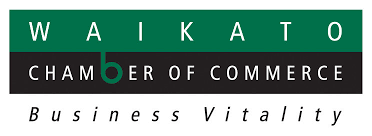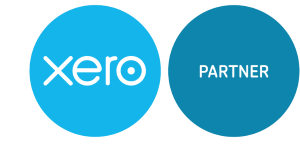PERSONAL VISION
- Develop a personal vision five years in the future.
- Decide on all the personal things that you both want to have and to do, by when.
- If you are looking at retirement, calculate how much cash you need to retire comfortably. Deeply consider how long you think you will be retired.
- Within reason, there is every possibility you could achieve your vision with the correct planning and assistance.
- Remember, you own a business to have a better life, not the other way around.
BUSINESS VISION
- Create a Team in your business made up of the best Employees.
- Work with your Team to discuss where the business could be in five years, think big goals.
- Draft of your business vision to discuss at your next Team meeting.
- Your business vision becomes the destination that you and your Team want to take the business to.
- Your business vision is like a road map to get to your business vision.
STRATEGY
- The strategy forms the core of any business plan; first, discuss all options for the business and then choose the best ones that will get you to your business vision.
- Work with the Team to discuss in detail all aspects of the business.
- Choose the best ideas and frame up the strategy.
- Use the strategy to make quality decisions when discussing the other business elements.
- The strategy is the map between where the business is today and where it wants to be in the five-year vision.
- Develop a comprehensive business plan outlining what the business must do to reach its business vision.
STRUCTURE
- The business structure supports the strategy.
- Discuss with the Team what the appropriate structure is to reach the business vision.
- We define a business structure as Legal structure, Asset structure, Business type structure, Organisational structure, Business systems structure, Financial structure, Technological structure.
- The business vision is the destination, the business strategy is the map, and the business structure is the vehicle we travel to get to the vision.
CULTURE
- Culture is the organisational glue that holds all the other structures in place.
- A business will ultimately fail if its Employees are unmotivated and unhappy working in the business.
- Some ideas to improve business culture: Complete employment contracts, roles and responsibilities, a fair remuneration structure, good work conditions, good social environment, promotional opportunities, training programmes, recognition of a job well done, assess Employee motivation toward their roles.
- A business culture must be planned and managed.
PRODUCTS OR SERVICES
- Establish an accurate pricing system.
- Decide on the best products or services to match the market requirement.
- Consider other products or services that will increase sales and profits.
- Create an effective pricing policy.
- Review all costs of products or services.
- Conduct supplier pricing reviews on all purchases.
- Review all pricing improvement strategies.
- Calculate apportionment of overhead into the pricing model.
MARKETING & SALES
- Marketing brings the Customers/Clients to the business; Salespeople make the sale.
- Develop a twelve-month marketing plan.
- Review Competitors pricing and positioning.
- Review all Customer/Client facing promotional material.
- Review branding and positioning of the business.
- Establish a target market with the most significant profit potential.
- Establish a lead generation system and KPI.
- Establish referral strategies.
- Establish retention strategies.
- Analyse ROI on marketing and advertising expenses.
- Do we have plans for extending the products or services we sell?
- Analyse the sales strategy. Are you actively hunting business?
- Are our salespeople up to the task of making the sales required for the business?
PEOPLE
- Your people are your most important asset.
- Review tasks for each position vs job description.
- Review Employee competency for each position.
- Establish output targets per FTE.
- Record actual output per FTE.
- Record unproductive time per FTE.
- Measure highest productive Employees.
- Develop KPI’s for each Employee.
- Develop training systems to improve KPI’s.
- Arrange regular meetings to discuss KPI’s.
- Establish standard operating times for jobs.
- Establish operating procedures for jobs.
- Create an incentive programme around productivity gains.
- Establish wastage and downtime recording systems.
- Measure profitability per FTE.
- Create benchmarks to compare Employees against.
- Ensure that regular performance reviews are conducted with employees.
SYSTEMS & PROCESSES
- What systems and processes are being used to streamline the business, make it more efficient, and improve business performance?
- Consider preparing business manuals to capture how work is done in the business.
- Investigate the accounting system and its ability to deliver what is required to provide accurate monthly accounts.
- Does the business have a policy manual that is available to all Employees?
- Does the business have a new Employee induction manual?
- Does the business have training programmes?
- Would the business run well if the Owner was not there?
EXPENSES
- Conduct a complete investigation of all expenses; typically, 10% of the current expense costs could be saved.
- Investigate utilities, power, phone, gas, etc.
- Investigate vehicle expenses, vehicles and fuel.
- Investigate insurance expenses.
- Investigate IT expenses.
- Investigate accounting expenses.
FINANCES
- Establish a forecast P&L, Balance sheet and cash flow for the next five years, monthly for the first year, yearly after that.
- Establish an accurate, timely, monthly KPI and financial reporting process.
- What is the cash handling policy? Are there two people involved with signing off payments?
- Instigate Debtor recovery procedure.
- Develop a trading terms policy to improve cash flow.
- Review invoicing speed, accuracy and processes.
- Review discounting policy.
- Establish accounts payable policy.
- Improve relationship with the business Bank, Accountant, and the Tax department, and major suppliers.
- Negotiate with Suppliers to hold stock and supply on demand.
- Investigate the best funding options.






